Boiler Efficiency & Combustion Efficiency
All boilers operate under the same fundamental thermodynamic principles and therefore, just like any other piece of thermal transfer equipment, knowing the log mean temperature difference (LMTD), in this case, between the furnace temperature and the flue gas outlet then the theoretical efficiency can be calculated.
The UK steam market is primarily satisfied by the Shell & Tube (Fire tube) boilers the efficiency of which is stated either as a percentage of ‘Gross Calorific Value (GCV) or Nett Calorific Value (NCV)’ with NCV giving the higher efficiency percentage. But in reality the two figures, whilst different values, mean the same.
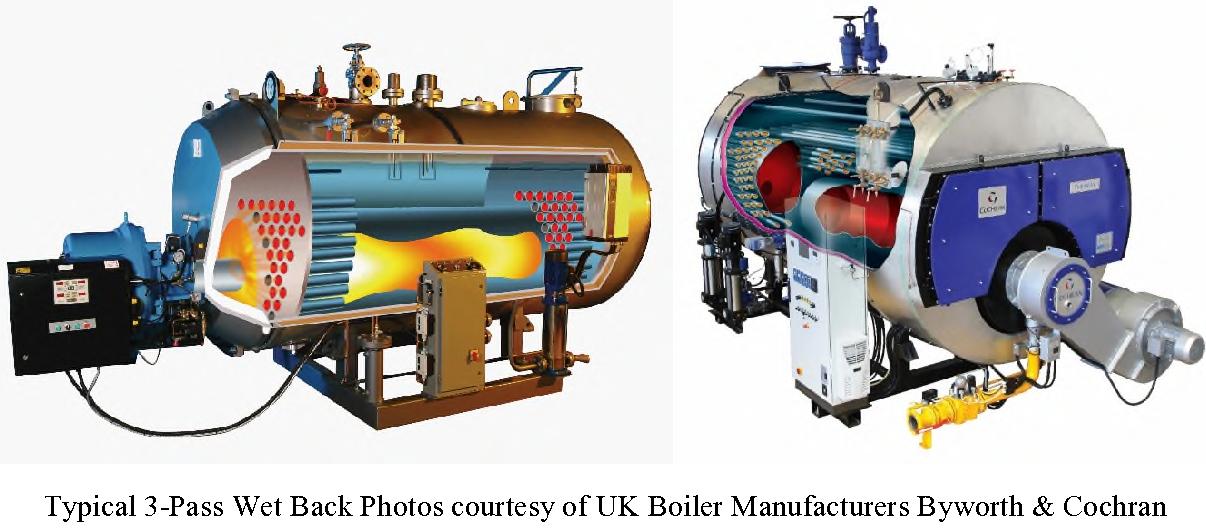
Quoting boiler manufacturers efficiency figures is a little like fuel economy figures supplied by car manufacturers they give you a comparison of maximum output performance under laboratory conditions. Whether or not these are achievable in the real world depends largely on the boiler operator. If the furnace and boiler tubes are not kept scale and deposit free then the thermal transfer surfaces will be compromised and you will never achieve the design output irrespective of how good the combustion process is.
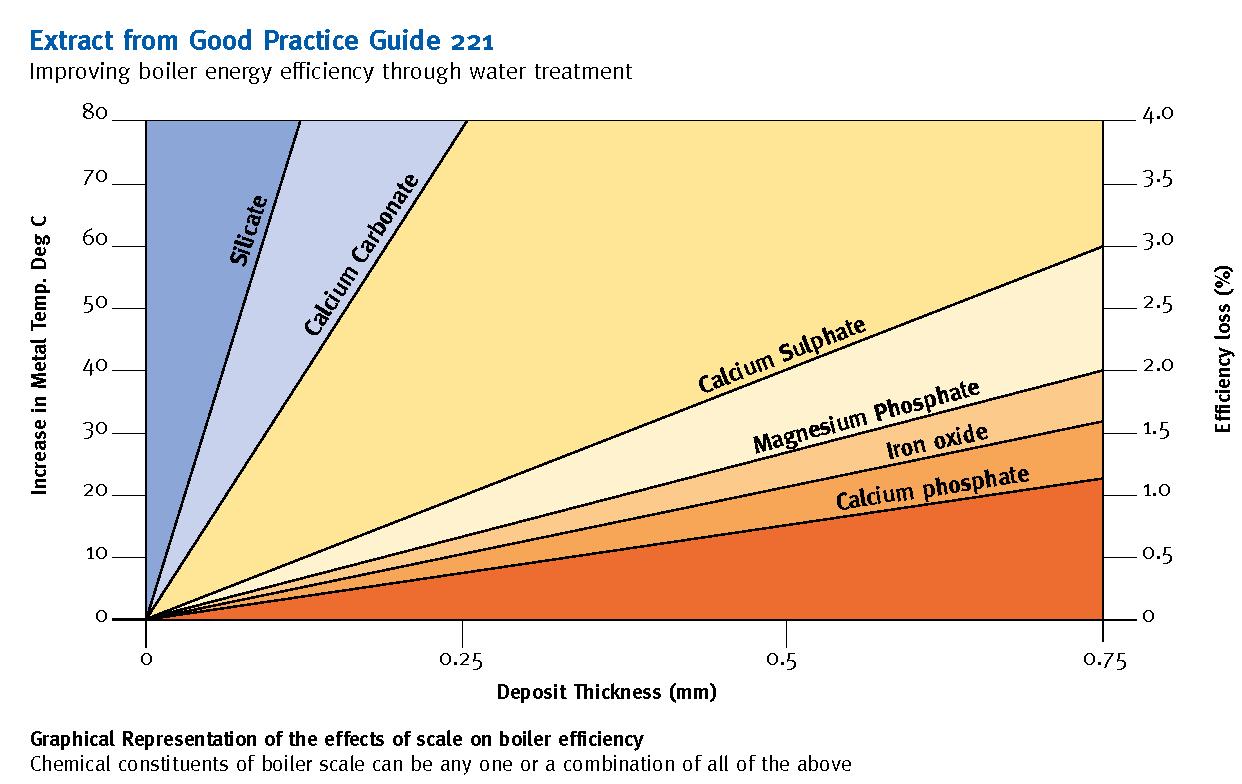
From the graph it can be seen that a scale thickness as little as 0.75mm (1/32”) of Calcium Sulphate will result in an efficiency loss of 3% and an increase in metal temperature of 60°C: efficiency losses due to scale of between 5% & 10% are not uncommon with the root cause being the way chemicals are added and how the feed and boiler water are monitored.
Likewise with combustion efficiency, if your steam requirements are variable and the burner is incapable of matching that load variation due to lack of turndown capability then again the boiler efficiency will suffer. The consequence of which is higher fuel and energy costs.
It is not unknown for boiler efficiency and combustion efficiency to be confused, in fact, Boiler Efficiency…relates to the thermal transfer of energy contained in the fuel to the water in the boiler. Effectively it is a means of comparing one boiler manufacturer against another.
Combustion Efficiency…relates to the optimum balance of air to fuel in the combustion process. To be efficient you need to maintain that balance throughout the firing range of the burner under variable load conditions. Every time a burner switches off it has to go through a purge cycle which represents wasted energy as the purge air extracts heat from the boiler on its journey from the burner to the flue.
Measuring combustion efficiency is relatively straightforward you simply take gas readings at the exhaust of the boiler and compare the results against the theoretical ideal conditions.
Too little air in the mixture can cause smoking whilst too much increases the heat losses through the chimney.
Boiler efficiency on the other hand relates to the overall efficiency of the boiler plant and is a comparison between total energy input against usable energy output and is a reflection on the mass of heat transfer area and its cleanliness. One might think therefore that to improve the boiler efficiency it would be a simple matter of adding extra heat transfer surfaces but there is a practical limit which follows the law of diminishing returns and becomes uneconomical. The cost of the additional equipment far outweighs the financial gains of providing it. However, there is one area that is worthy of investigation and it is that of the ‘Condensing Economiser’ and its application on small steam plant.
Once purchased there is little that can be done to improve the thermal efficiency of a boiler save for maintaining the cleanliness of the heat transfer surfaces and extracting additional heat from the flue gasses.
However, combustion efficiency can be improved by replacing old burners with new. To understand and explain the potential we have enlisted the assistance of Dunphy Burners Rochdale, who have kindly provided the following explanation:
Combustion efficiency – the importance of flue gas temperature and excess oxygen
The flue gas temperature across a firing range will vary from boiler to boiler. A true three pass design will generally have lower flue gas temperatures and a greater heat transfer surface. Boiler insulation will also have an impact on radiated losses.
The factors affecting combustion efficiency are excess oxygen and turndown. Combustion efficiency is dependent upon the ability of the burner to attain complete combustion with a minimal amount of excess air/oxygen. It follows therefore that the lower the level of excess oxygen the more efficient the burner. If this can be achieved throughout the turndown range, then optimum fuel economy will result.
Combustion efficiency and carbon reduction
The key to maximizing combustion efficiency (and minimise carbon reduction) is to minimize the amount of excess oxygen by operating as close to stoichiometric combustion (0% oxygen in the flue) whilst maintaining a minimum amount of CO. The excess oxygen is dependent in part on fuel type but generally it is based on the ability to accurately mix the fuel and air. Precision air/fuel ratio control maintaining optimum O2 levels across the full turn down ratio with O2 levels less than 2.5% at high fire and 4% at low fire across a 10:1 turndown range can be achieved in conjunction with axial air flow.
The graphs below provide an indication of the relationship between reducing excess oxygen, and efficiency.
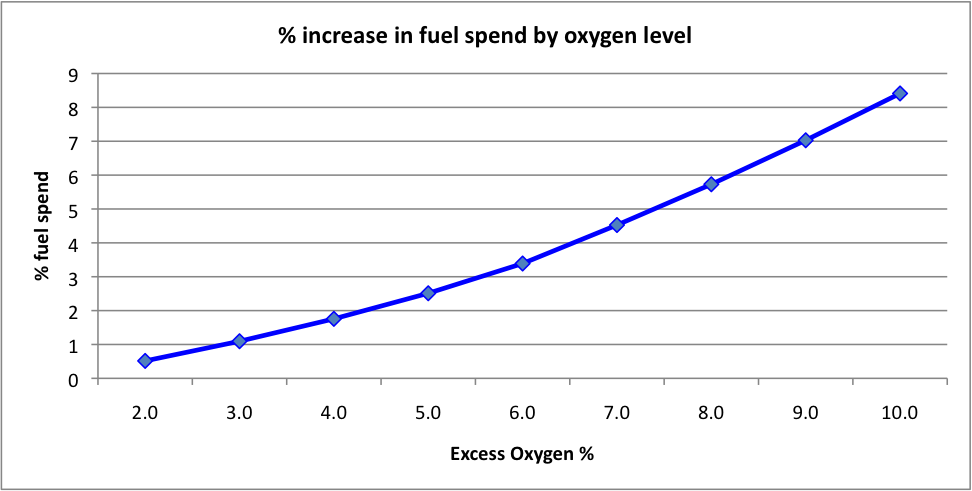
Turndown ratio
A measure of burner efficiency is turndown ratio. The turndown ratio is the maximum possible output divided by lowest possible output achieved whilst maintaining good efficiency in combustion. The efficiency improvements attributable to high turndown ratios are more difficult to quantify and are often ignored when considering overall boiler efficiency as efficiency is always calculated at a point in time.
The ability of a burner to map a load will prevent cycling and minimize boiler purging. It follows that the more variable and extreme the load, the greater the savings that are achievable with a high turndown.
The graph below indicates the effect that turndown has on fuel savings.
REDUCTIONS IN FUEL COSTS FROM DUNPHY HIGH TURNDOWN BURNERS
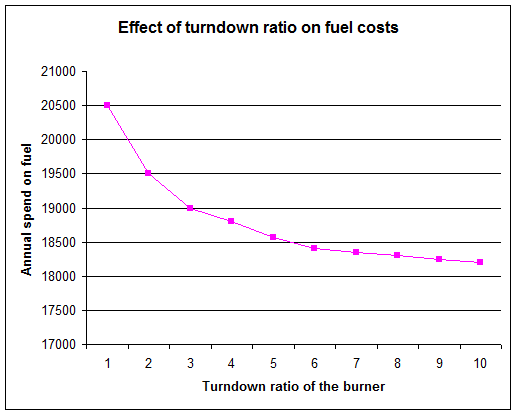
Efficiency benefit of fitting a variable speed drive
The addition of a variable speed drive ensures that the electrical consumption of the burners will be limited to the absorbed power of the motor. As turndown is increased, the motor absorbed power will reduce by the inverse square law. The main benefit of fitting an inverter on an axial air flow burner however, is the increase in turndown allowing 10:1on gas and improved control. Since fuel costs are often twenty times electrical costs savings are substantial.
The benefits of the unique axial air flow
The Dunphy burner is designed on the axial air flow principal which is a turbine design concept and delivers significant energy performance improvements when compared with other types of combustion equipment. Axial air flow uniquely produces uniform air distribution to the burner head at ALL levels of firing including, in particular, low fire operation.
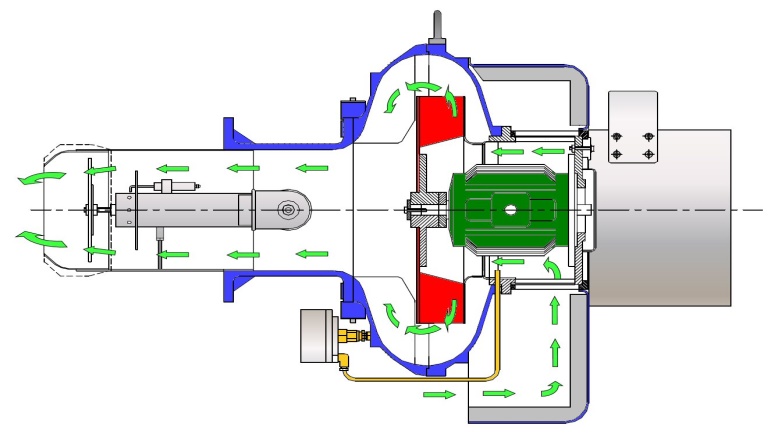
The virtually perfect air distribution derived from the axial flow concept means that there is no requirement for energy consuming and noise generating vanes and splitters and ensures:
high efficiency across a wide turndown range
- lower fuel consumption
- inherently low NOx
- symmetrical design of air flow is fundamental to accurate fuel air mix
- no peaks or troughs of air distribution as the burner turns down the modulation range associated with centrifugal fans
- air flow is laminar and does not turn 90°C into the burner head
- Inherently low noise (enhanced by the Monobloc construction of the burner). The combustion air is taken over the motor to cool the fan eliminating the requirement for a cooling fan reducing noise and electrical consumption.
- All the burner components lie along one centre line reducing turbulence in the burner head
- There is no requirement for expensive acoustic shrouds.